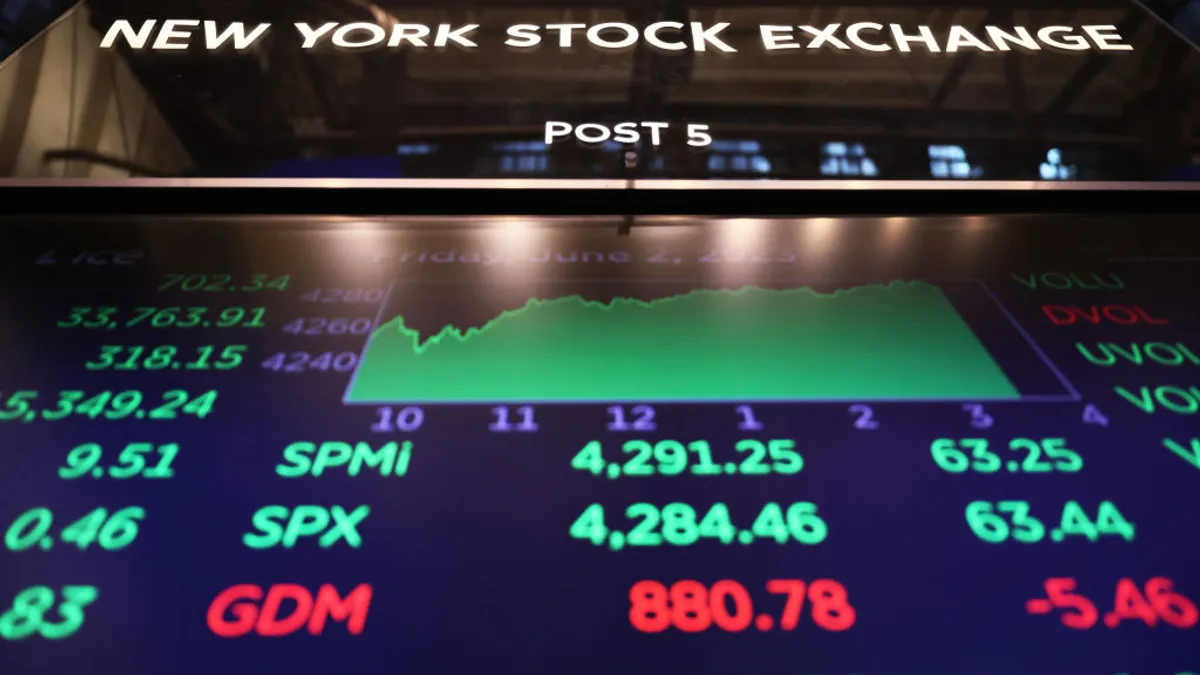The market for glucagon-like peptide-1 (GLP-1) agonists such as Ozempic and Wegovy is soaring, but their success could be a detriment to competing drugs, devices and procedures, according to a new report from global strategy and management consulting firm Kearney.
Nine therapeutic areas stand to lose up to 23% of their market share due to the rise of GLP-1 drugs, amounting to $7.2 billion by 2033. Dr. Cian Wade, one of the report’s authors and a consultant with Kearney, calls the rising class of treatments a potential “silver bullet” for several costly and devastating diseases with clinical results vetting their ability to control diabetes, induce weight loss and more recently improve cardiovascular disease markers.
This earned Novo Nordisk’s Wegovy a new FDA approval to help protect heart health, prompting Medicare to expand coverage for the drug to help prevent heart attacks and strokes. Companies like Novo and Eli Lilly are also testing other applications in addiction, metabolic dysfunction-associated steatohepatitis (MASH), chronic kidney disease, Alzheimer’s disease, heart failure with preserved ejection fraction (HFpEF) and obstructive sleep apnea.
The report estimates as many as 9% of Americans could have a GLP-1 prescription by 2030, fueling a $200 billion market. Competitors are, not surprisingly, on edge about the encroaching threat.
“There are lots of creative ways that companies at risk from the impact of GLP-1s can actually turn themselves from losers into winners."

Dr. Cian Wade
Consultant, Kearney
Clients with competing products say they have been getting concerned questions from investors, said Betty Pio, a report co-author and partner in Kearney’s healthcare and life sciences practice. Even outside of healthcare, the mood is tense.
“Our colleagues have also been getting some of those same questions that cross different sectors, like the food industry, for example, consumer goods industry, etc.,” Pio said. “So, a lot of companies are worried and looking at this.”
GLP-1 research news prompted market volatility in the second half of 2023. Continuous positive airway pressure (CPAP) machine manufacturers witnessed a 40% drop in stock value, while insulin delivery system makers and dialysis providers like DaVita fell 50% and 20% respectively in the wake of early results showing the drugs might help people with kidney disease, according to the report.
However, while the market has reacted aggressively to new information about GLP-1 performance, some “ifs” are still attached to the losses, including how willing payers are to cover these costly, long-term drugs; their power to reduce health risks from diabetes and obesity-related conditions; side effects; and how long people are willing to stay on them, said study authors.
Companies that could take a hit
As GLP-1s continue to gain steam, competitors will likely incur losses domino-style, with insulin-related businesses the first to fall, even within the same companies — GLP-1 leaders Lilly and Novo also dominate the insulin market.
Insulin is experiencing a real headwind from the GLP-1s not only because patients with diabetes will need less of the blood sugar-controlling drug, but because people who lose weight on the new weight loss treatments may be less likely to develop the condition altogether, Wade said.
Within three years, companies that make heart attack drugs, stents, CPAP machines and dialysis equipment could also feel the pinch. In three or more years, losses may extend to manufacturers of knee and hip replacements that repair joint problems often exacerbated by obesity.
Other areas that may also see a ripple effect as people shed pounds include dermatology (psoriasis and cellulitis), surgical procedures (abdominal hernias, pancreatitis and gastroesophageal reflux disease) and products to treat high blood pressure, high cholesterol, stroke, Alzheimer’s disease, Parkinson’s disease, certain cancers, diabetes-related eye conditions, depression and peripheral arterial disease.
One area that may or may not be negatively affected is bariatric surgery for weight loss, according to the report. This surgery could retain some advantages for patients and payers as a durable, drug-free solution. Surgeons currently can’t keep up with demand for these procedures, so even if some patients opt for medication, there will still likely be many in line for surgery. It’s also possible the GLP-1s might work well in conjunction with these procedures, according to the report.
Organizations that stand to lose with the rise of GLP-1s should approach the problem head-on, Pio and Wade said.
“Take a realistic bottom-up view of the impact, especially for your specific product or your specific portfolio,” Pio said.
After assessing potential losses, companies should look for opportunities to broaden the use of existing products or explore the potential for approvals in new indications, asking themselves, “can we change the product slightly to be able to serve a slightly different patient population, perhaps generating new trial data?” Wade said.
Companies should also consider new opportunities. For example, GLP-1s could increase the need for cosmetic procedures to remove excess skin following weight loss.
“There are lots of creative ways that companies at risk from the impact of GLP-1s can actually turn themselves from losers into winners,” Wade said.

















